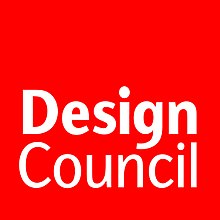
Brighton is a seaside resort and one of the two main areas of the city of Brighton and Hove in the county of East Sussex, England. It is located 47 miles (76 km) south of London. Archaeological evidence of settlement in the area dates back to the Bronze Age, Roman and Anglo-Saxon periods. The ancient settlement of "Brighthelmstone" was documented in the Domesday Book (1086). The town's importance grew in the Middle Ages as the Old Town developed, but it languished in the early modern period, affected by foreign attacks, storms, a suffering economy and a declining population. Brighton began to attract more visitors following improved road transport to London and becoming a boarding point for boats travelling to France. The town also developed in popularity as a health resort for sea bathing as a purported cure for illnesses.
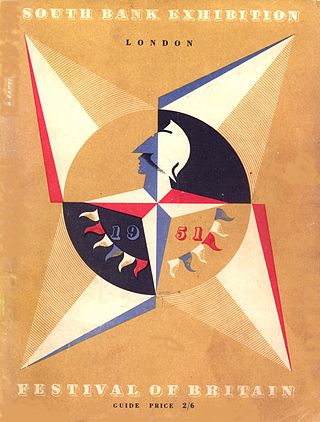
The Festival of Britain was a national exhibition and fair that reached millions of visitors throughout the United Kingdom in the summer of 1951.

Southwark is a London Underground station in the London Borough of Southwark at the corner of Blackfriars Road and The Cut. It is between Waterloo and London Bridge stations on the Jubilee line, and is in Travelcard Zone 1. It was opened on 20 November 1999 as part of the Jubilee Line Extension. The station is somewhat west of historic Southwark, which is served by Borough and London Bridge stations. Its entrance is across the road from the disused Blackfriars Road railway station.

The Royal Alexandra Children's Hospital is a children's hospital located within the grounds of the Royal Sussex County Hospital in Brighton on the south coast of England. It provides outpatient services, inpatient facilities, intensive care and a 24-hour emergency care service for children referred by GPs and other specialists. It is managed by University Hospitals Sussex NHS Foundation Trust.

The Commission for Architecture and the Built Environment (CABE) was an executive non-departmental public body of the UK government, established in 1999. It was funded by both the Department for Culture, Media and Sport and the Department for Communities and Local Government. It was merged into the Design Council on 1 April 2011.

Brighton i360 is a 162 m (531 ft) moving observation tower on the seafront of Brighton, East Sussex, England at the landward end of the remains of the West Pier. The tower opened on 4 August 2016. From the fully enclosed viewing pod, visitors experience 360-degree views across Brighton, the South Downs and the English Channel.

Eastside City Park is a 6.75 acre urban park located in the Eastside district of Birmingham City Centre. Designed by architects Patel taylor with landscape architect Allain Provost, the park was opened to the public on 5 December 2012 at a cost of £11.75 million. Lining the frontage of Millennium Point, the park provides 14,300 square metres of landscaped green space, 310 trees, a 110 metres (360 ft) canal water feature and a public square incorporating 21 jet fountains.
Jack Howe was an architect and industrial designer who worked on Impington Village College as an architect and the Chubb cash dispenser MD2 as an industrial designer.

Brighton and Hove, a city on the English Channel coast in southeast England, has a large and diverse stock of buildings "unrivalled architecturally" among the country's seaside resorts. The urban area, designated a city in 2000, is made up of the formerly separate towns of Brighton and Hove, nearby villages such as Portslade, Patcham and Rottingdean, and 20th-century estates such as Moulsecoomb and Mile Oak. The conurbation was first united in 1997 as a unitary authority and has a population of about 253,000. About half of the 20,430-acre (8,270 ha) geographical area is classed as built up.
Sunand Prasad is a British architect and senior partner of architectural practice Penoyre & Prasad, a multi sectoral practice with an internationally recognised profile in health, education and civic buildings. He is a past President of the Royal Institute of British Architects (RIBA).
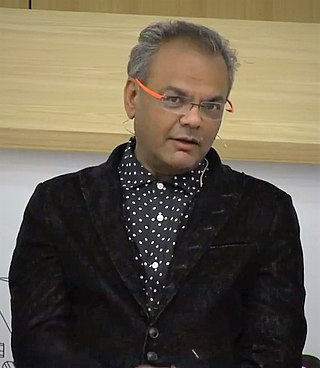
Hanif Mohamed Kara is a structural engineer and is design director and co-founder of London-based structural engineering practice AKT II. He has taught design internationally, is a member of the board of trustees for the Architecture Foundation and was a commissioner for CABE from 2008 to 2011. He is currently Professor in Practice of Architectural Technology at Harvard Graduate School of Design. He also taught as professor of Architectural Technology at KTH Royal Institute of Technology in Stockholm from 2009 until 2012. He lives in London with his wife and two daughters.

The Jubilee Library is the largest running public library in the English city of Brighton and Hove. The Jubilee Library forms part of the Jubilee Square development in central Brighton, as a £50 million endeavour to regenerate a 40-year-old brownfield site. Opened in 2005 by the Princess Royal, the library has won several architectural design awards, and on one occasion dubbed, "A triumph" by the Pevsner Architectural Guides. In terms of the number of daily visitors, the library is one of the busiest in England. The library brought together facilities previously housed in separate sites.
Clayton & Black were a firm of architects and surveyors from Brighton, part of the English city of Brighton and Hove. In a career spanning the Victorian, Edwardian and interwar eras, they were responsible for designing and constructing an eclectic range of buildings in the growing town of Brighton and its neighbour Hove. Their work encompassed new residential, commercial, industrial and civic buildings, shopping arcades, churches, schools, cinemas and pubs, and alterations to hotels and other buildings. Later reconstituted as Clayton, Black & Daviel, the company designed some churches in the postwar period.

Paul Dring Morrell is an English chartered quantity surveyor. Formerly senior partner of Davis Langdon, he was, from November 2009 to November 2012, the UK Government's first Chief Construction Adviser.
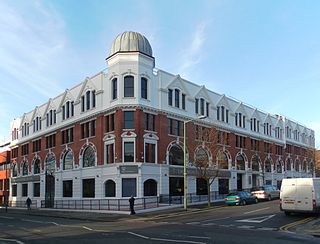
The Montefiore Hospital is a private hospital in Hove, part of the English coastal city of Brighton and Hove. It opened in November 2012 and is operated by Spire Healthcare, the second largest provider of private healthcare in the United Kingdom. The hospital is located in a large and "distinctive Edwardian commercial building" designed by prolific local architects Clayton & Black between 1899 and 1904. Originally built for local department store Hanningtons as a furniture depository, the "magnificent red-brick building" was converted into offices for the Legal & General insurance company in 1972. Six years after that firm moved to a new site in Hove, Spire Healthcare bought the empty building and spent £25 million converting it into a hospital.
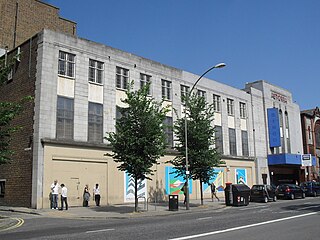
The Astoria Theatre was a former cinema in Brighton, part of the English coastal city of Brighton and Hove. Built in 1933 in the Art Deco style for a local entertainment magnate who opened one of Brighton's first cinemas many years earlier, it was the first and most important expansion of the Astoria brand outside London. It initially struggled against the town's other "super-cinemas", but enjoyed a period of success in the 1950s and 1960s before rapid decline set in, culminating in its closure in 1977.

The Bear Road area is a largely residential area in the east of Brighton, part of the English city of Brighton and Hove. Centred on the steep west–east road of that name, it is characterised by terraced houses of the early 20th century, but Brighton's main cemeteries were established here in the 19th century and there is also some industry.
Nahid Majid OBE is a Bangladeshi-born British civil servant, chief operating officer for Regeneration Investment Organisation at UK Trade & Investment, deputy director within the Department for Work and Pensions and former urban planner. She is currently the most senior British Bangladeshi Muslim woman in the civil service.
Emma Appleton is an Australian landscape architect and urban designer notable for her contributions to urban planning and development. She is the Director of City Strategy at the City of Melbourne, Victoria.
